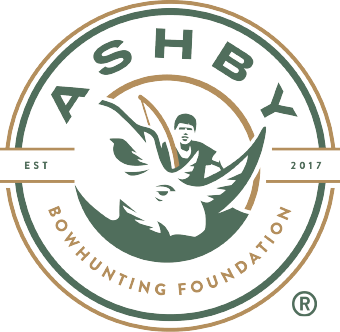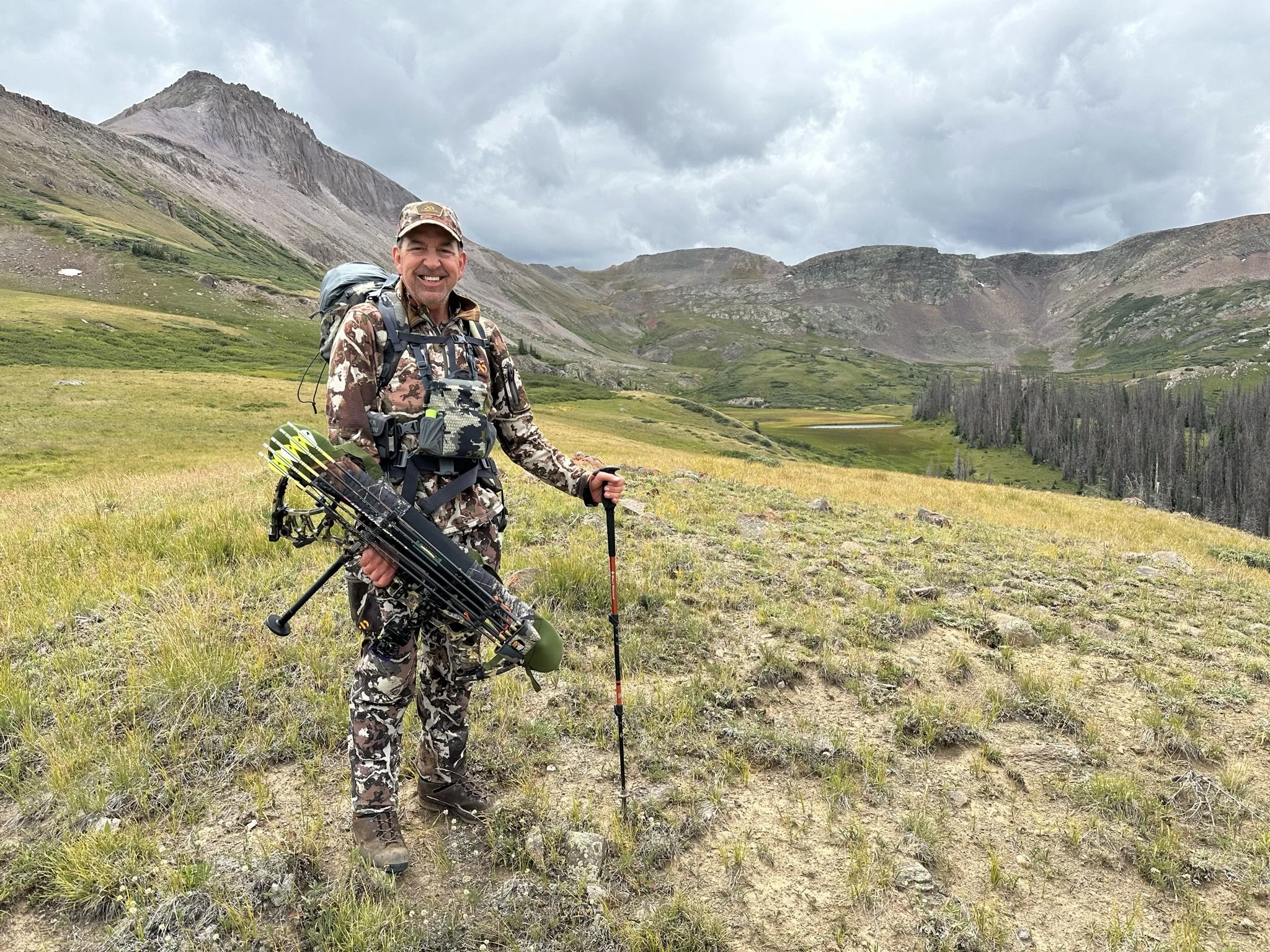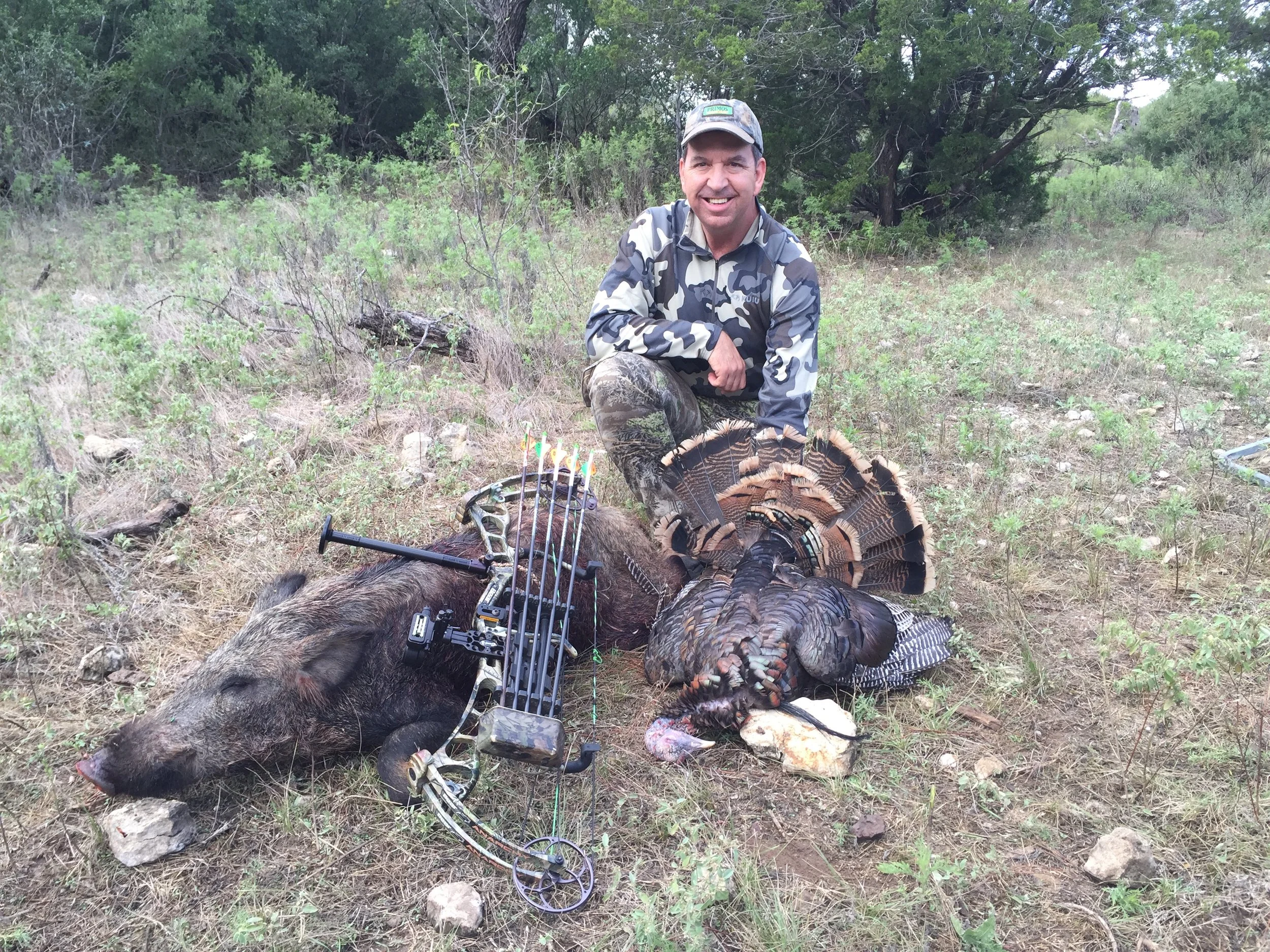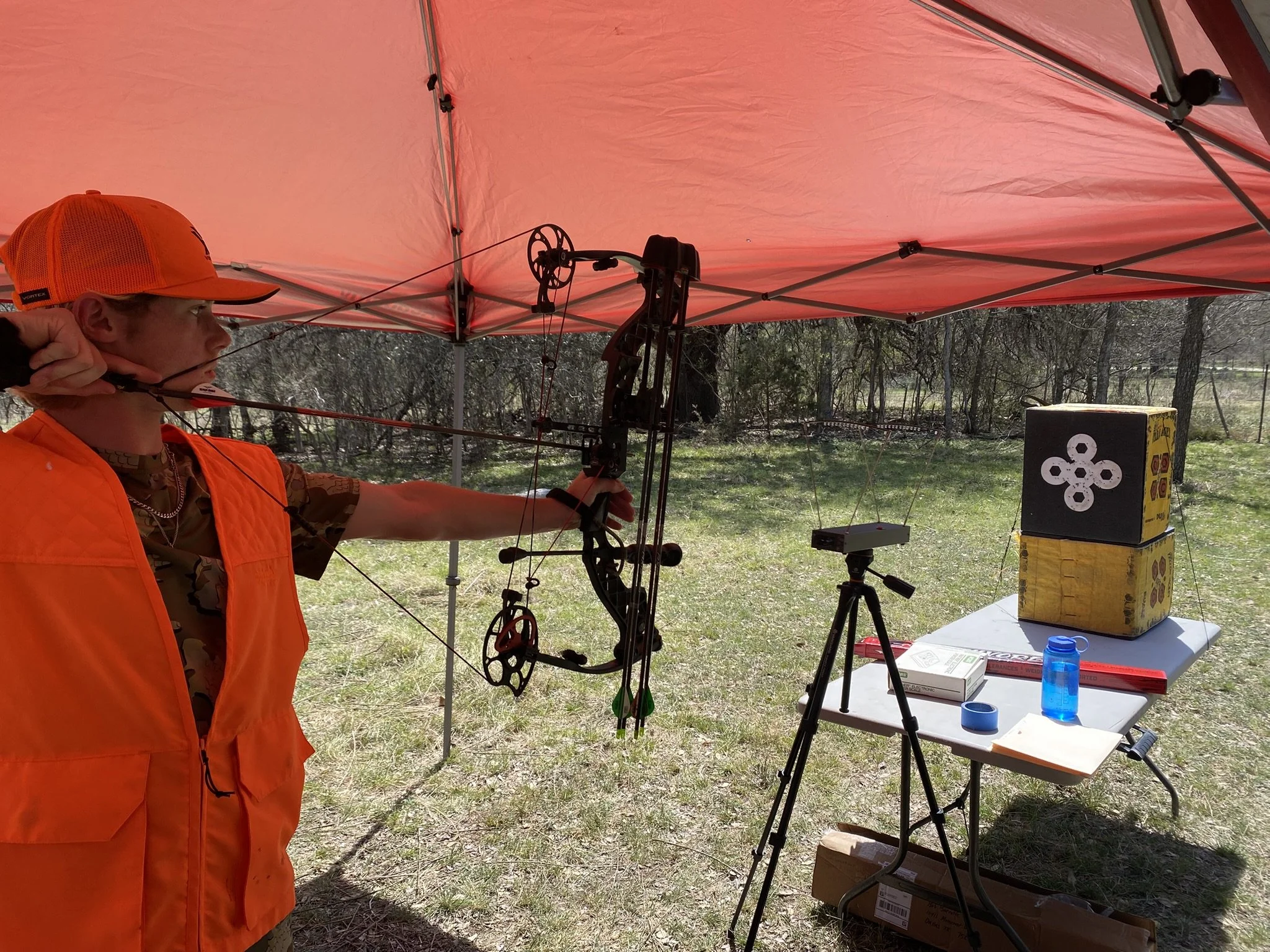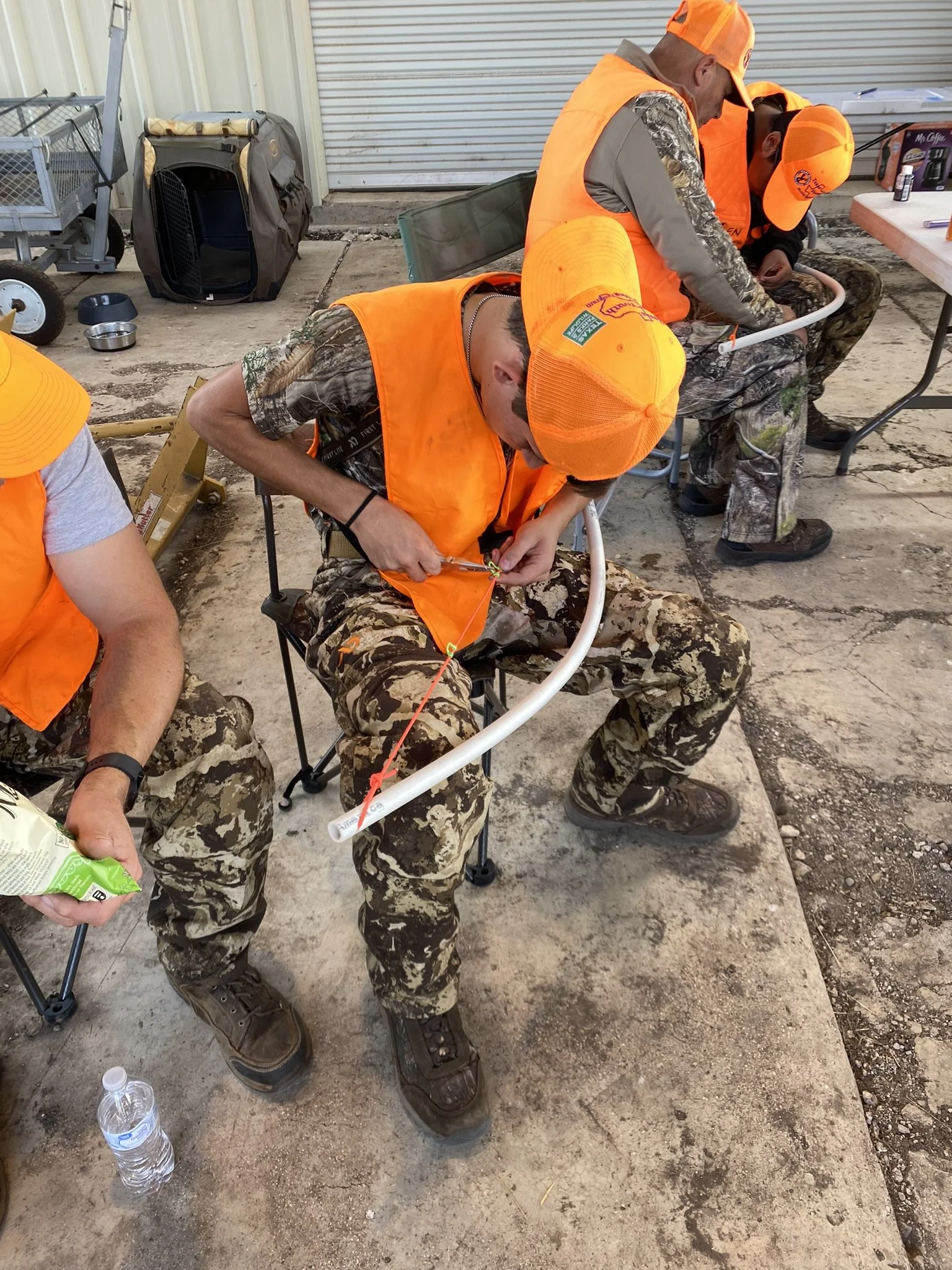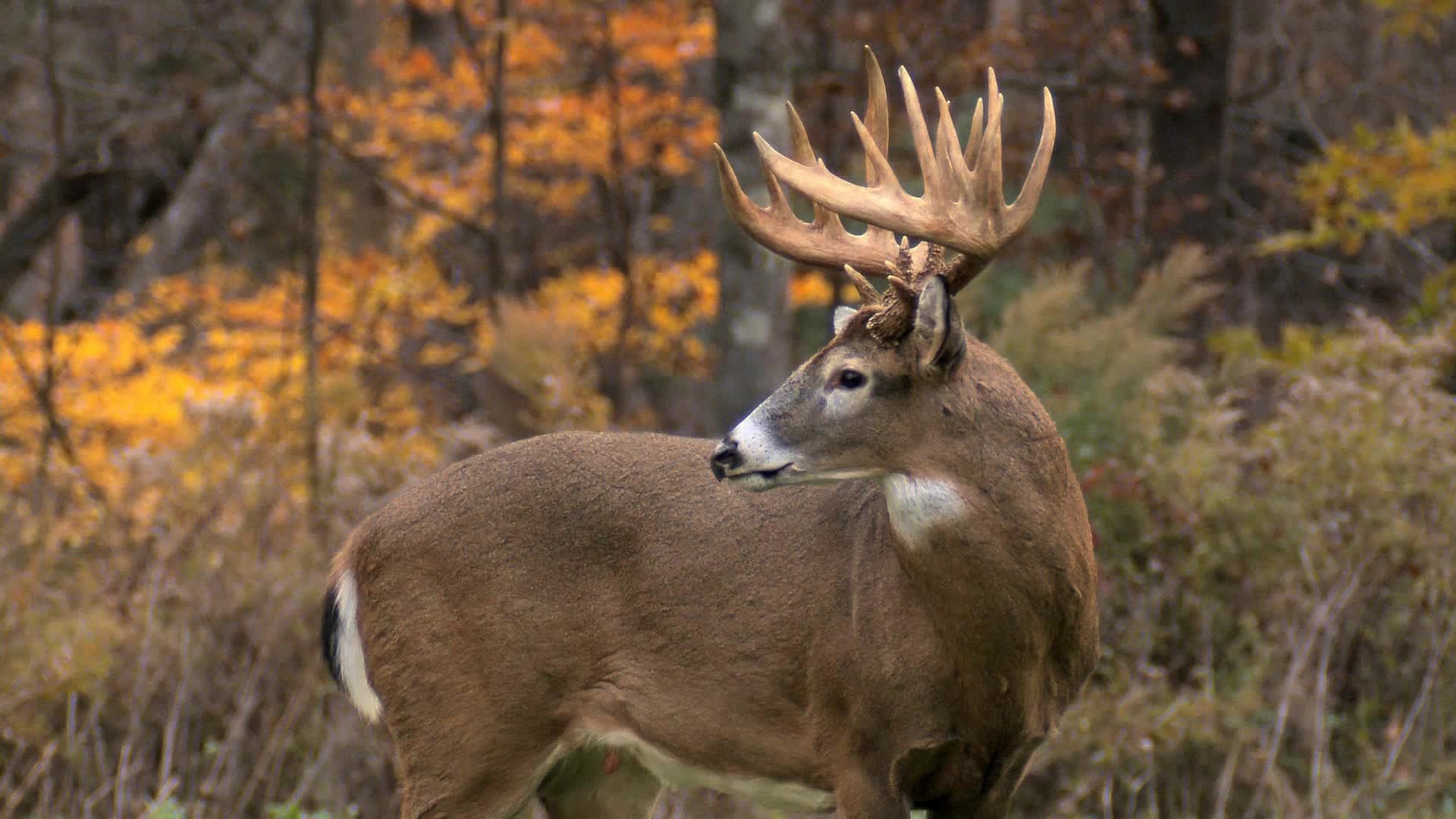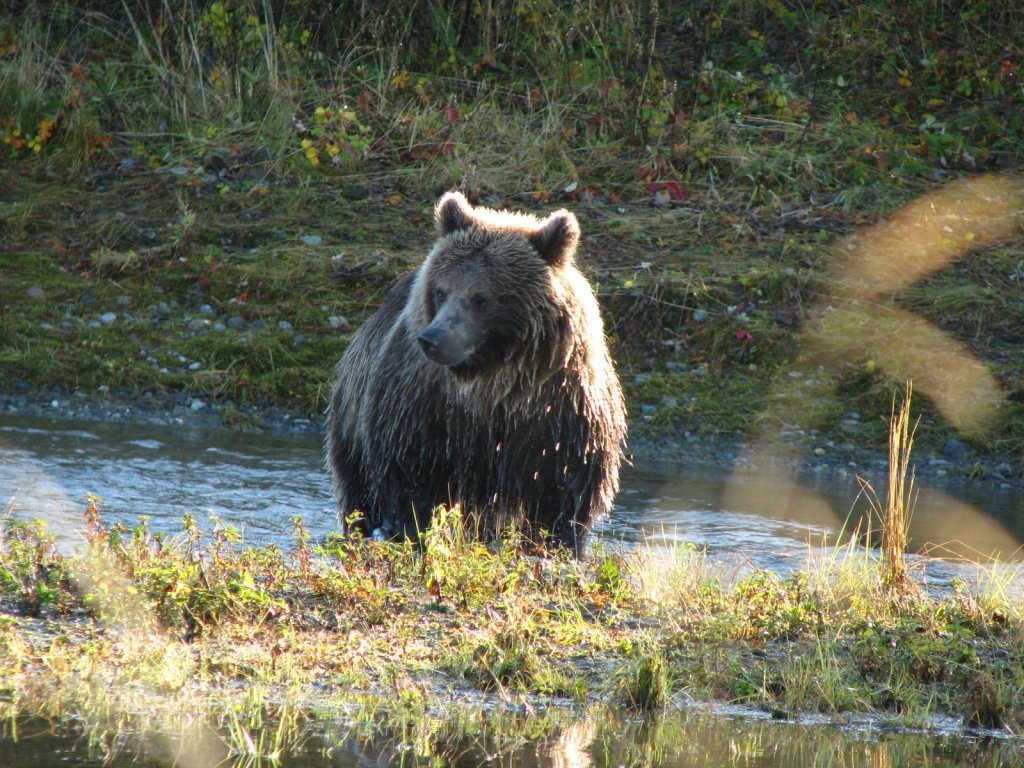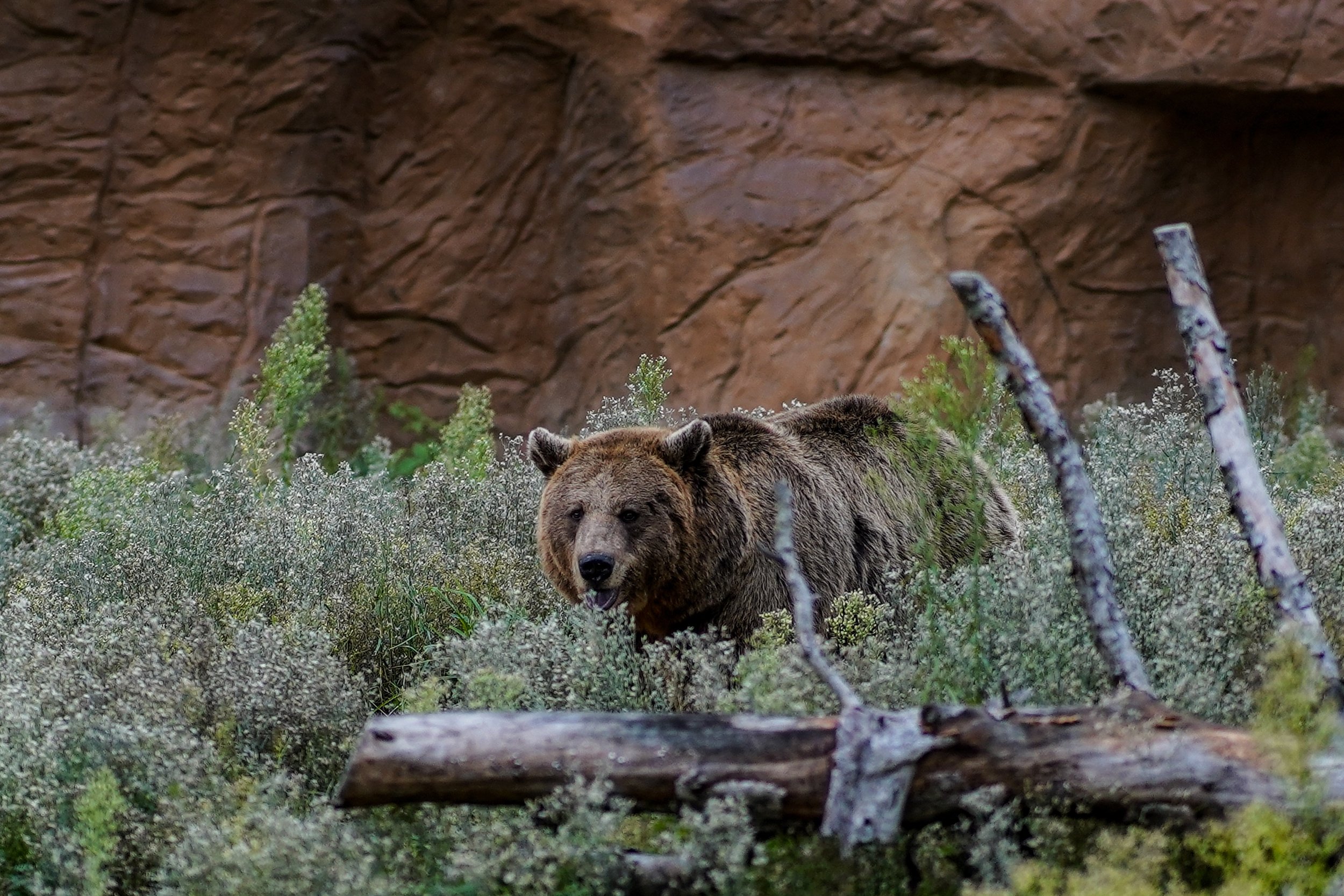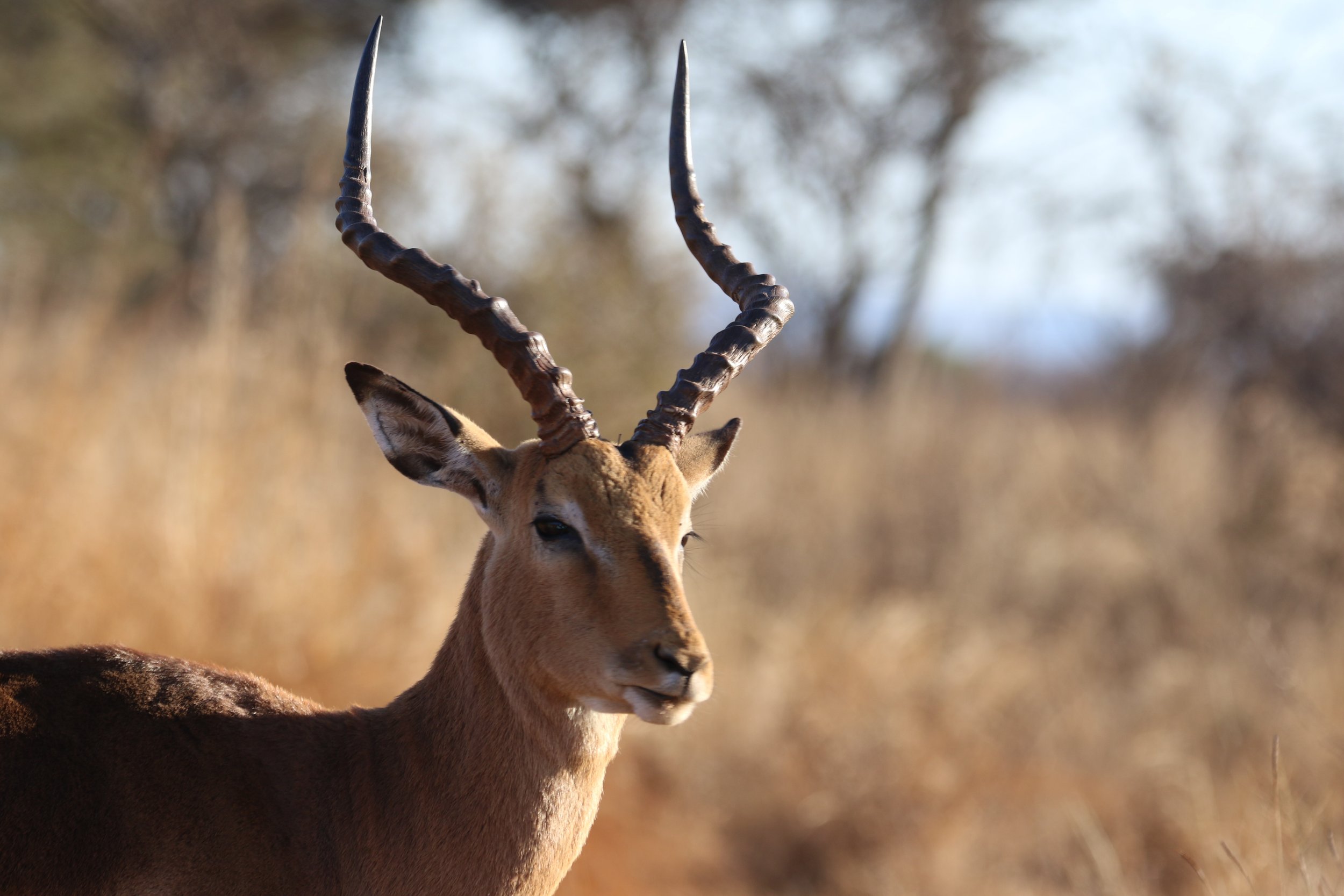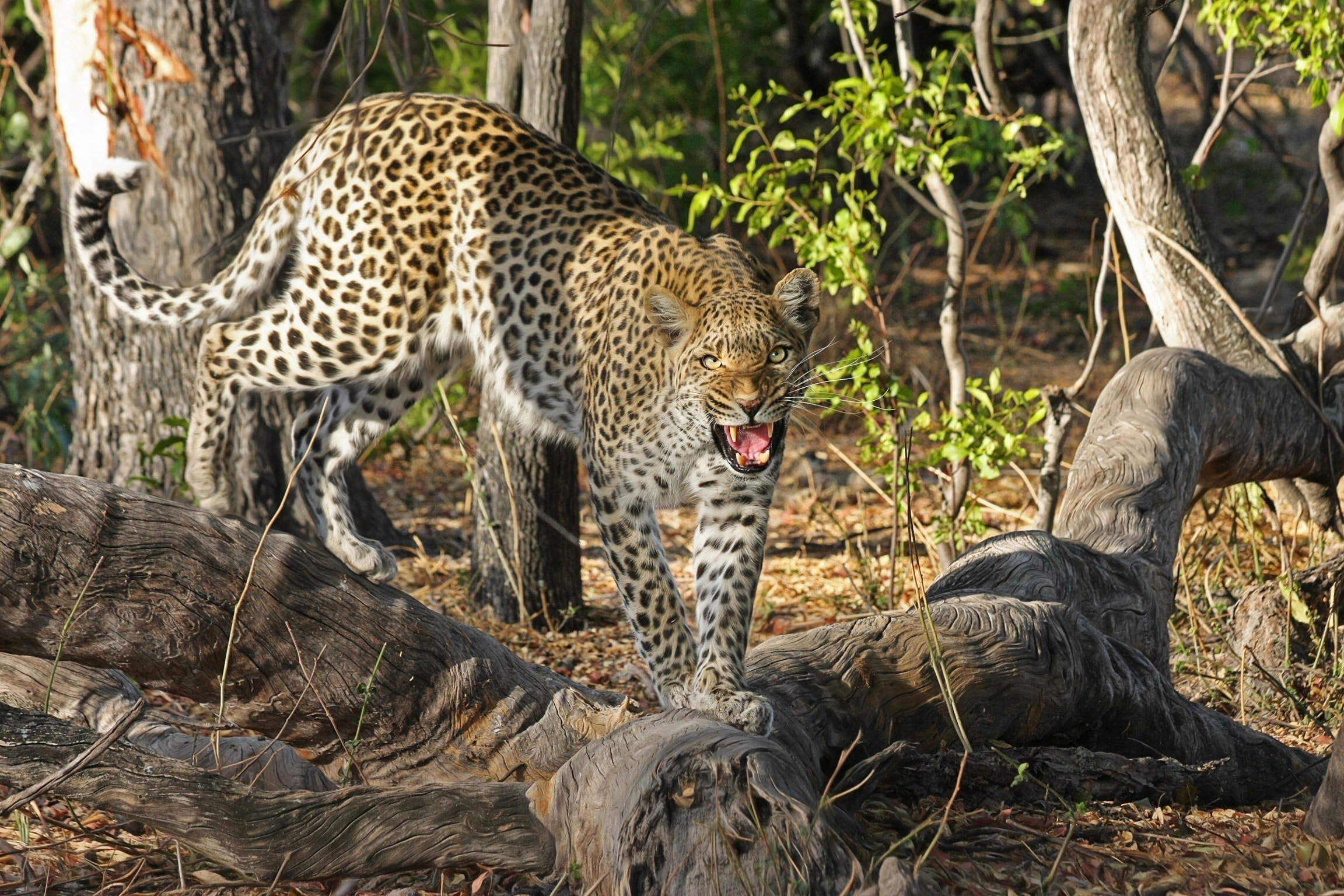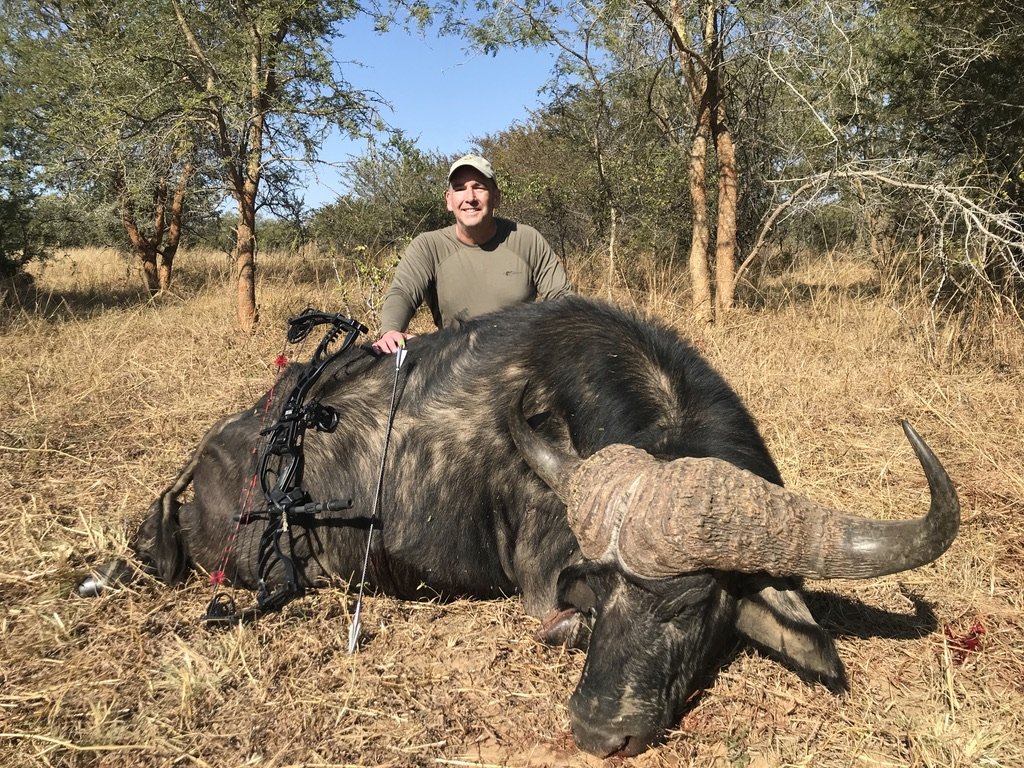DIY bowhunt on public land in Colorado. I saw this bull three times over the course of four years. I had one opportunity on a September evening at 15 yards from a ground blind I made from natural materials near this wallow. But when I glanced at my phone to check the time I realized it was twelve minutes after legal shooting light. I let it walk and watched it bugle and fight another bull for ten minutes before it slipped off into the dark timber. I never saw this bull again after that close encounter. David Neils, ABF Advisor
Ashby Bowhunting Foundation Newsletter
August 2025
President’s Message
Make Archery Healthy Again, Work on your ABS
Every bowhunter needs to work on their ABS, that is the Arrow, Bow and Shooter. For an ethical hunter, success is not simply a matter of equipment or experience in isolation; it is the marriage of these three essential elements. When perfectly synchronized, ABS form a harmonious triad, elevating bowhunting from mere sport to a discipline of precision, patience, and respect for the wildlife we hunt. Simply, it is a lifestyle to work on your ABS year-round so you are ready to hunt anytime.
The Arrow: More Than a Projectile
Too often, the arrow is overlooked and dismissed as a passive participant in the hunter’s pursuit. In reality, the arrow is the vessel that transforms intent into reality and connects you with the animal. Its weight, spine, length, and tip design all influence its flight path and penetration potential. Mismatches between arrow and the bow can result in erratic flight that robs the arrow of energy that could be utilized for penetration through the animal. The arrow’s role is definitely not passive; it is an extension of both the bow and the shooter’s will. For those that think the bow is more important, please hand them 12 mismatched arrows to shoot.
The Bow: The Delivery Mechanism
The bow utilizes its stored energy into kinetic force to launch the arrow. Modern bows—whether recurve, longbow, or compound—are unique. Regardless of preference, these must be properly tuned to launch the chosen arrow with perfect flight to maximize the penetration potential of that arrow.
The Shooter: The Human Element
At the apex is the shooter that makes it all happen, or not. We have seen this time and time again, but all the technology in the world will not compensate for poor form, inconsistent release, or a lack of mental focus.
• Stance and Posture: Consistency begins at the feet. A stable stance aligns the body, bow, and target, reducing unnecessary movement and promoting repeatable shots.
• Anchor Point: Where the string meets the face must be identical with each draw. Inconsistencies create variance, causing the arrow to stray.
• Release and Follow-Through: A smooth release and disciplined follow-through ensure that the arrow departs cleanly, free from torque or flinching that would ruin its flight.
• Mental Focus: The moment of truth in hunting comes amidst an adrenaline surge. The shooter’s ability to calm their heart and still their mind is as crucial as any piece of gear.
Synchronization: The Path to Ethical and Effective Hunting
ABS must function as an integrated system. This integration is not merely about hitting the target. It is the foundation of ethical hunting—a clean, killing shot that respects the quarry and the wilderness. A few tips on how to achieve this synchronization:
• Consultation: Seek out professional archery shops for proper fitting and tuning. Personalized advice can save months of frustration and wasted resources.
• Practice: Regular, mindful practice reinforces muscle memory and synchronizes the shooter’s rhythm with their equipment’s performance.
• Equipment Checks: Before every hunt, perform thorough inspections and test shots. Environmental factors—temperature, humidity, altitude—can affect both bow and arrow.
• Continuous Learning: Read, watch, and seek mentorship. Each hunt is different and cannot be learned in the comfort of the shooting range.
Bad shots happen to us all no matter how well we prepare, but poor or no synchronization of ABS increases the likelihood of wounded animals and unrecovered game, outcomes no ethical hunter wishes to risk. Too often people practice just before hunting season, or not at all, and there is no way the ABS are truly synchronized. More often than not, this leads to a blackeye for the bowhunting community and why many landowners shut down their land to bowhunters. Unfortunately, we recently learned of exactly that situation with another unprepared U.S. bowhunter in Australia with the landowner reaction being “NO BOWHUNTING”. Simply, don’t be that person. We highly encourage everyone to strive for excellence and relentlessly work on your ABS.
The path to mastery is neither short nor simple, but therein lies its reward. When bow, arrow, and shooter move as one, the result is more than a shot—it is an artful act, a conversation with nature, and a quiet assertion of the hunter’s place in the wilderness.
This triad, when in balance, ensures the legacy of bowhunting endures with dignity. It honors the animal pursued and the land traversed. And as the sun sets and arrows find their mark, the bowhunter knows that success is not measured solely in trophies, but in the profound satisfaction that comes from perfect harmony on the hunt.
The importance of ABS synchronization cannot be overstated. It is the difference between frustration and fulfillment, between a missed opportunity and a memorable hunt. More than any individual component, it is their unity that defines the bowhunting experience—an experience as challenging as it is rewarding, as ancient as it is alive.
Good hunting and as always, have a nice day.
Rob Neilson
Rob Neilson with Nilgai cow.
Donations
The Ashby Bowhunting Foundation is a 501 (c) (3) education and research organization. 100% of your donation will go to the Missions of Ashby Bowhunting Foundation. No salaries are paid by the Foundation. We realize there are many worthwhile organizations out there, and greatly appreciate your consideration and support.
Dennis Wehling challenging himself with the 29.6 yard one shot challenge, simulating a hunting situation as much as possible.
Newsletter Tip - One Shot Challenge
As hunting season approaches most hunters are looking forward to getting out in the woods to enjoy their hunt and dreaming of making that one perfect shot. The goal of the “One Arrow Challenge” is to create the opportunity to practice the “one perfect shot” over multiple days (3-5 days) prior to the hunt. Shoot from any position you think you might find yourself in during your hunt, i.e. standing, sitting, kneeing, elevated positions, odd angles, etc. Using your broadhead arrow and a broadhead target, pick what you think is a likely shot distance within your effective range. Identify a kill zone that accurately represents the target species kill zone and mark its size and shape. Shoot only one arrow each day with no other shooting or practice until the drill is complete. The “One Shot Challenge” goal is to replicate hunting pressure which builds each day. It can be fun to share this drill with a few buddies and send a photo of your shot each day to share.
To continue your “One Shot Challenge” beyond this drill, begin each daily practice session with your first arrow (this the only arrow that counts that day). You and your bow are cold with no warmup practice prior to that first shot. Good luck to all.
Events
August 31, 2025: High Level Arrow Terminal Performance discussion at Outlaw Archery in Spring, Texas
September, 2025: Possible testing to gather additional data.
November, 2025: Private Terminal Performance Workshop for a group of international bowhunters.
November, 2025: Recipient of the coveted Dr Ed Ashby Bowhunting Award will be revealed.
WhatsApp Community
If you utilize WhatsApp, ABF has a site inside the Longoria-Hosmer Hunting and Conservation Community. As our readers know, 100% of donations into ABF go to furthering the missions of ABF. The same holds true with the Longoria-Hosmer Foundation where hunters directly support the wilderness and wildlife conservation efforts of the @longoriahosmerfoundation, a 501c3 nonprofit that empowers wildlife and wilderness conservation around the globe. The links are here:
Longoria-Hosmer Hunting and Conservation Community: Open this link to join my WhatsApp Community: https://chat.whatsapp.com/I22hsy6aEZ8BHPbklkvwQg
Ashby Bowhunting Foundation: Open this link to join my WhatsApp Group: https://chat.whatsapp.com/JAs760BctAK8E644dXG1m9
We hope the subscribers of our newsletter will join this one-of-a-kind community. Of course, common sense rules apply…stupid posts will get you kicked out without notice.
Ashby System Results - Bowhunter Interview with Bob Barnette
Bob Barnette, one of the Ashby Bowhunting Foundation Directors, departing on a one-mile hike deep into a high Colorado basin to stalk mule deer.
How long have you been a bowhunter?
I’m a life-long hunter, with over 50 years of experience. I began bowhunting in 2001 after buying an old, third-hand PSE compound bow for $50 and figuring out how to shoot. A couple years later, after much trial-and-error, I finally arrowed my first deer at my family’s ranch here in Texas. That whitetail buck hopelessly hooked me on bowhunting!
Tell us about your years of experience as a bowhunter instructor?
I became an IBEP Bowhunter Education Instructor in 2012. Inspired by several mentors who were Instructors, I wanted to help others learn to hunt safely and effectively, and felt I had enough experience that I could shorten learning curves for new bowhunters. I also became a USA Archery Level 2 Instructor, and through my local archery club conducted both group and private lessons in archery and bowhunting for many years.
Teaching the IBEP course has been very fun and rewarding. Most of my classes have been a mix of new and experienced hunters, and I’ve taught a number of young bowhunters through my job with the Texas Youth Hunting Program. I encourage all the students to share their perspectives, and I often learn new things from them. One of the great things about hunting is that there is always more to learn! I always tell my students the very best bowhunting instructor is a mature whitetail doe – one of the hardest critters to take with a bow, and they will teach you all sorts of lessons, usually the hard way!
Much of the IBEP course focuses on ethics – making good choices. This comes into play with the equipment you choose, your proficiency as a shooter, and the often complicated decision of whether to shoot or not. Unfortunately, many of the examples new hunters draw upon are celebrity hunters or YouTube heros who are really just hustling products and do not model ethical decision making. How many times do such hunters whisper to the camera something like “I had to take that shot, it’s all he would give me” after attempting an ultra-long shot or one at a bad body angle. I emphasize with my students that you never have to shoot – you can always choose to wait for a better situation. You owe it to the animal and to yourself to only shoot when you know you can make a lethal shot.
What are some of the major barriers to helping bowhunters adopt the Ashby System?
I think hunters are heavily swayed by archery industry emphasis on arrow speed. Yes it is easy to think fast = cool. It’s a marketing strategy that enhances sales. Hunters need to accept that a little less speed due to a heavier, more efficient arrow system, will serve them better. I think one of the overlooked aspects of heavier arrows is that they are easier to tune and achieve great flight as compared to ultra-light arrows. Bowhunters should realize that the ultimate in Cool, is a humanely and effectively harvested game animal – that is what really counts! And arrow systems that are optimized for great flight and terminal performance rather than speed are the way to really be cool.
Also I believe that most new bowhunters are not starting out with Ashby-style setups, and learn about this approach after they have already been shooting awhile with lighter arrow systems that shops often push. Thus they are reluctant to make changes to what they are already satisfied with, and hesitate to undertake the process of experimenting with other arrows to find what is optimal. They truly don’t know what they don’t know.
Which strategies, given your experience, seem to work best to help bowhunters
adopt this successful Plan A and Plan B system?
A great strategy to motivate change is to remind folks that the broadhead and arrow are the one part of your gear that makes contact with and lethally wounds your target animal. That deer won’t know if your bow was a top of the line, latest Hoyt or a 10-year old eBay bargain if it launches an optimized arrow system with great flight characteristics that strikes and penetrates with the maximum energy possible. Stated differently, we spend a lot of money on our bows, our accessories, our camo, our trucks, etc., etc. – don’t cut corners on the part of your gear that actually touches the animal!
Also I think there is a terminology issue…we often describe Ashby-style arrows as “heavy” arrows and compare them with “light” arrows. I think the term “heavy” misleads folks – a 650 grain arrow is still a very light object, but many seem to think of it as comparable to launching a telephone pole through the air.
There is a misconception that ABF tries to dictate what arrow systems should used; however our advice as stated in workshops we lead is merely “to shoot the heaviest arrow possible with a trajectory you find acceptable.” That leaves a lot of latitude for one to optimize their system!
Finally I like to share a quote from Dr. Ashby – “No bowhunter ever complained that their arrow penetrated too much!”
A bowhunter who honestly and practically considers what they do and how they do it can always find ways to improve their approach.
Do you hunt with traditional equipment, compound, crossbow, or a combination of these?
I can shoot both traditional and compound bows, but have only hunted with compound bows.
What is/are your favorite animal(s) to hunt?
My true favorite animal is elk, since they are so fascinating and challenging to hunt. However, since I live in Texas and have family property here, the animals I hunt most are whitetails and hogs. Although there are many negative things about the presence of hogs on the landscape, they are great fun to hunt with a bow and are tasty to eat, and I’ve harvested more hogs with a bow than any other animal.
What is/are your favorite bowhunting method(s): stands, still hunting, spot and stalk, pure stalking, or other?
For deer and hogs I primarily hunt from tree stands and popup blinds; however, to me the most fun is pure stalking. Ways I’ve hunted elk include posting up at water holes and stalking, but no hunting experience I’ve ever had compares to hunting the rut and calling a bull into shooting range. Life-changing stuff!
What event(s) brought you to use Ashby-style arrow setups?
I attended a presentation by Dr. Ashby and Rob Nielson at a Hunter Education Instructors conference several years ago, and was very intrigued! I did some experimentation with higher FOC on my arrows and liked the results. I attended another workshop by Rob a couple years later, and decided it was time to really adopt the 12-Factor approach with a new setup.
Could you describe your typical arrow setup(s) for hunting big game?
I use a two-blade, single bevel broadhead on a slightly tapered shaft with a 3-vane fletching setup, and a compound bow with a 70-lb. draw weight. Initially I tried a total arrow weight of 650 grains, to match the “Heavy Bone Threshold” described in the 12 Factors Affecting Arrow Penetration. I had an easy time with this transition and harvested a number of hogs with this setup. Later I switched to a slightly lighter 575 grain arrow for a 2023 mule deer hunt in Colorado, anticipating possible longer-range shots and desiring a slightly flatter trajectory. Recently I’ve still been shooting the 575 grain arrows but I could easily switch back to 650.
Overall, what has been your experience using Ashby-style arrow setups?
Not sure if I’m good or lucky, but switching over from my former 440 grain setup was very easy. My bow loves the heavier setups and only minor tuning tweaks were needed. As expected I lost a bit of arrow velocity, but when shooting animals or targets it is quite obvious the arrows hit harder than before. Performance on game has been outstanding. I shot an old, heavy whitetail buck in 2024 with a 575 grain arrow, making a double-lung, pass-through shot at 30 yards. When skinning it the wound looked more like a gunshot wound than an arrow hit – he was smacked really hard! I don’t recall ever seeing wound trauma like that when I used lighter arrows.
Do you have any bowhunting tips you would like to pass along?
I have tons of tips but will just highlight a few…First, learn to shoot! Develop proper form that is consistent and repeatable. Without a foundation of good shooting form, you cannot assess the results of any changes to your gear. Tuning, sighting-in, and experimenting with arrows and broadheads will be endlessly frustrating without good shooting skills. Also, learn how to adjust your sight and rest, learn how to install a peep sight, and learn how to tie a D-loop. If something goes wrong in the field a pro shop will probably not be just around the corner. When you get your bow and accessories set up in final settings, use a sharpie to mark the positions of everything on your bow, and take pictures with your phone. If something gets bumped you can tell if it moved, and if you have to do a field repair, this will help you restore everything to prior status and you should be 99% ready to go again. Finally, practice shooting from “field situations.” Most of us shoot our bows on a range or in our backyard, standing, and wearing shorts and flip-flops. Which is great. But also practice wearing your hunting clothes, backpack, and from sitting, kneeling or other real-world hunting positions – this will best prepare you for that moment you’ve been dreaming about!
Bob’s first bow harvest in 2003, with 9-yr old Connor Barnette looking on.
Bob has been hopelessy hooked on bowhunting ever since.
A productive fall morning from a Texas tree stand!
Youth on a Texas Youth Hunting Program archery hunt, experimenting with
high-FOC arrows donated by ABF.
Youth on a Texas Youth Hunting Program archery hunt, learning the
important skill of tying a D-loop.
From the Field - Pivotal Elk Hunting Lessons
When something is pivotal, it is central, and everything related to the topic turns or depends on it.
Most of the pivotal moments in my bowhunting journey, since 1975, occurred when I finally figured out why I was making a particular mistake over and over again. Early on I’d blame the mistakes on fickle wind, nervous animals from other hunters in the area, etc. But as I matured I realized there were most likely some things I did have control over. I was fortunate to find some folks who were much more successful as bowhunters. After fifty years of bowhunting there are less than five pivotal changes that made an enormous difference. Here are a few.
Call Elk Slightly Uphill, Not Straight Uphill or Downhill
I learned this from a fellow bowhunter, Andy Martinez. There was a reason he successfully killed a bull with his recurve, year after year, when the success rate for bowhunters averaged 13% in Colorado.
We were hunting up the Poudre Canyon, above the river, requiring a serious climb that allowed us to have the basin to ourselves. After catching our breath near an elk wallow we heard a bull a few hundred yards away and quickly set up and called. The bull came in so fast he almost ran over the top of us, winded us and took off. There was hardly time to get an arrow knocked. We chided ourselves for being so unprepared. While we were eating humble pie, another bull bugled across the valley, most likely responding to our calling as well as the other bull. We sat and listened, more than a quarter mile away, as the bull would go back and forth on the hillside. Andy guessed the bull had cows he was checking on between bugling and raking trees.
We took our time closing the distance, ensuring we had the air currents directly in our face. When we reached the bottom of the valley, the cold air drainage was still pronounced so we moved slowly up the hill through the sagebrush, knowing the bull, and possibly his cows were off to our left. I wasn’t sure why he was taking this route. I assumed he knew what he was doing. We cross the contour line the bull and his cows were on and continued into another draw, up and to the right of the activity. Then Andy explained why we were here and what we were doing.
Andy told me that he’d had more success calling bulls in slightly uphill and making sure they had to climb over some serious topography at 20 yards distance to see where the call was coming from. Andy got tucked into the base of a juniper tree and I was below about twenty yards, just below a main wildlife trail that we hoped the bull would take.
The bull came in several times but would stop at 50 yards and circle back to check on more than a dozen cows in a draw about 250 yards away. I decided to mix it up and cow call for Andy. That seemed to convince the bull it was worth coming in closer. He walked right up to where Andy was sitting, less than ten feet away, turned slowly and started heading back to his cows. Andy slowly stood up from a kneeling position as the bull moved away. At this point the bull was only 12 yards from Andy. Andy came to full draw and gave a sweet cow call to stop the bull. The bull turned perfectly, offering a quartering away shot and Andy clipped the top of the aortic valve on the top of the heart with a pass through. The bull made it about 75 yards before it crumpled into the hillside.
While we were deboning the elk I realized this wasn’t a situation of pure luck. It was calculated with topography and air currents taking center stage. Andy knew what he was doing and I learned a valuable lesson that day. Even with the bull coming in multiple times, we never spooked the bull with our human scent or presence.
Pay Attention To Low Pressure Systems
When I was in my teens I spent a lot of time hunting alone. The areas I wanted to hunt were physically difficult to get into and out and I didn’t know many hunters who were interested in expending that much effort. So I hunted alone and actually enjoyed it. And I’d go out in all kinds of weather. In fact, I had this flawed assumption that the hunting would be better if it was snowing or raining hard. Now I know, nothing could be further from the truth.
Animals that depend on their sence of smell, either defensively, offensively or both, prefer consistent airflow. There are exceptions to this rule. For example, mule deer, especially big muley bucks love to bed on finger ridges where there is a steep drop off behind them, causing the air currents to eddy, just as an eddy in a stream or river. As soon as that air flow comes over the cliff, it drops in speed and rolls, causing air to move in all directions. Mule deer are more comfortable sleeping in these places as they will be alerted to danger from all directions. But once they are on their feet and feeding, they prefer consistent air flow.
What is the connection between a low barometric pressure and inconsistent airflow? During a low pressure system there is more vertical lift of air, causing unstable air currents. In Colorado, along the Front Range of the Rockies, when the barometic pressure continues to fall below 29.75 we are typically in a low pressure system. But on the bright side, with 325 days of sunshine, many of our days are squarely in a high pressure with consistent airflow.
If I don’t have a choice of when to hunt and I’m caught in a low pressure system, I’ll stay on the very edges of my hunting area to avoid educating elk with my scent. And once we are climbing out of that low I know these animals are going to lay down a lot of tracks in the first two days of high pressure. And I’ll take advantage of that and hunt major travel routes and meadows with wallows.
My favorite free source of barometric pressure as well as predicted wind direction is Weather Underground. The ten day forecast includes a black barometric pressure line. You’ll also see the dominant wind flow shown by arrows at the bottom of the chart. For more detailed wind information I prefer using Windy.com. And the best education is boots on the ground, spending 80% of my time scouting and 20% bowhunting.
Celebrating the WILD in wildlife,
David Neils
Bull elk in late July, feeding in a meadow with three elk wallows. This meadow, during a high pressure system, enjoys thermals out of the east from 8:00 am until sunset. Understanding why resulted in several successful bowhunts over the years.
The green arrow indicates where the cow elk were that the bull was checking on. The red arrow indicates where Andy shot the bull with his recurve. Note the path of the bull from the tip of the green arrow to the red arrow is slightly uphill. And the bull had to climb over a small hill before he was within 15 yards.
This meadow with three elk wallows is impossible to hunt during a low pressure system due to the swirling, inconsistent airflow. But it’s fantastic during a high pressure system when the air currents are stable.
Doc’s Ramblings
Now, as the summer heat begins to subside and the anticipation for another hunting season builds, there’s one crucial, often overlooked, element bowhunters should prioritize to ensure ethical and successful hunts: consistent practice from varied shooting positions.
Most bowhunters spend countless hours perfecting their draw and aiming with unwavering focus from the comfortable stability of a standing position on a level range, shooting at a target with a dot on it, and taking all the time they need to get that perfect shot away. This form of practice may be necessary for establishing a solid foundation, but the reality of bowhunting seldom presents one with such ideal shooting scenarios. In the field, one frequently encounters uneven terrain, thick brush, inclement weather, and fleeting opportunities that often demand unconventional shooting stances.
Think about it: when hunting, how many times have you found yourself awkwardly perched on a hillside, kneeling behind a fallen log, or contorted around a tree? In these moments, the muscle memory and precision honed from flat-range shooting alone quickly unravel. The shifts in balance, the strain on unfamiliar muscle groups, and altered anchor points and draw lengths drastically impact your shot trajectory and ultimately, the outcome of your hunt.
Why is practicing from diverse positions so vital? By practicing from kneeling, sitting, leaning, contorted, and elevated positions, you train your body to maintain stability and execute a consistent shooting sequence regardless of the circumstances. Practice from varied shooting stances and body positions builds crucial muscle memory that will kick in instinctively when the pressure is on.
Uneven terrain is a common challenge. Practicing on differing inclines, declines, and with obstacles in your shot path helps you develop the core strength and balance necessary to maintain a steady aim in less-than-perfect conditions.
Dr. Ed Ashby with a southern bushbuck
Replicating real-world hunting scenarios in your practice sessions helps you identify and address potential challenges before they arise in the field. You’ll learn how to adjust your stance, anchor point, and even your draw length slightly to compensate for different body positions.
Knowing you’ve practiced and achieved accuracy from various awkward positions will significantly boost your confidence when faced with a challenging shot opportunity. This mental mindset: confidence, if you like, can be the deciding factor in making a clean and ethical shot.
Ultimately, consistent practice from diverse shooting positions contributes to ethical hunting. By expanding your practical shooting skills in realistic field conditions, you decrease the risk of wounding an animal due to an ill-prepared shot.
Here are some off-season practice tips. Begin with slight variations from your standard standing stance. Try shooting with your body at some angle other than square to your target by altering the position of your feet. You can achieve the same effect by not moving the position of your feet while taking shots at various angles to your right and left. Now try those shots from a slightly crouched position, from kneeling on one knee, kneeling on both knees, and from sitting on a stump, log, or chair.
One thing I rarely see compound shooters do is roving: “stump shooting”. Short of off-season hunting for things like predators and hogs, and non-protected small game, stump shooting is the best form of practice for the bowhunter. When stump shooting, almost anything can become the target if there is a safe backstop. A single leaf on the ground, a clump of grass, or a bush are all fair game. Practicing with rubber blunts, even stumps and trees become targets.
If you have access to varied terrain, incorporate it into your practice. Practice shooting up and down slight slopes from these positions. Once you are comfortable with your shooting from varied positions, introduce obstacles near the flight path of your arrow. Practice threading your arrow through small openings in the brush, between yourself and the target. Position those small openings at varied distances between the target and yourself. Shooting through these holes in the brush helps you learn a great deal about the flex and trajectory of your arrow.
Don’t forget to include practice sessions during inclement weather. Cold, wet, and windy weather are frequent occurrences during fall hunting seasons. Off-season practice sessions during inclement weather help you select the clothing and equipment you need to deal with the weather and how to adjust your shooting form and technique to accommodate heavy clothing and/or protective rain gear.
From all these varied shooting conditions, one can practice situations where you must hold your draw for an extended period before taking the shot, and when you have only seconds to take the shot, with no time to laser range the distance to your target.
With all these scenarios, you must learn to shoot at a target that has no fixed aiming point, no target dot. Animals don’t come equipped with target dots! Learn to pick your spot when there’s no dot to help you aim.
During the off-season, do as much actual hunting as you can. Hunting both non-protected predators and feral hogs is a great off-season option and, importantly, allows you to become accustomed to shooting broadheads. I found that predators responding to a call were among the best off-season practices, but I practiced on everything available. I hunted rabbits in front of dogs, which is a fantastic way to improve one’s shooting skills on moving targets. Besides predators, hogs and rabbits, I ‘hunted’ sparrows, bullfrogs, bumblebees, and dragonflies; any small animals the law allowed.
As bowhunters, we are committed to ethical hunting practices. By dedicating time to practice on diverse targets from diverse shooting positions, we not only increase our chances of success but, more importantly, we honor the animals we pursue with clean, ethical shots. Challenge yourself, expand your comfort zone, and prepare for whatever the wilderness throws your way.
Good hunting, my friends,
Dr. Ed Ashby
